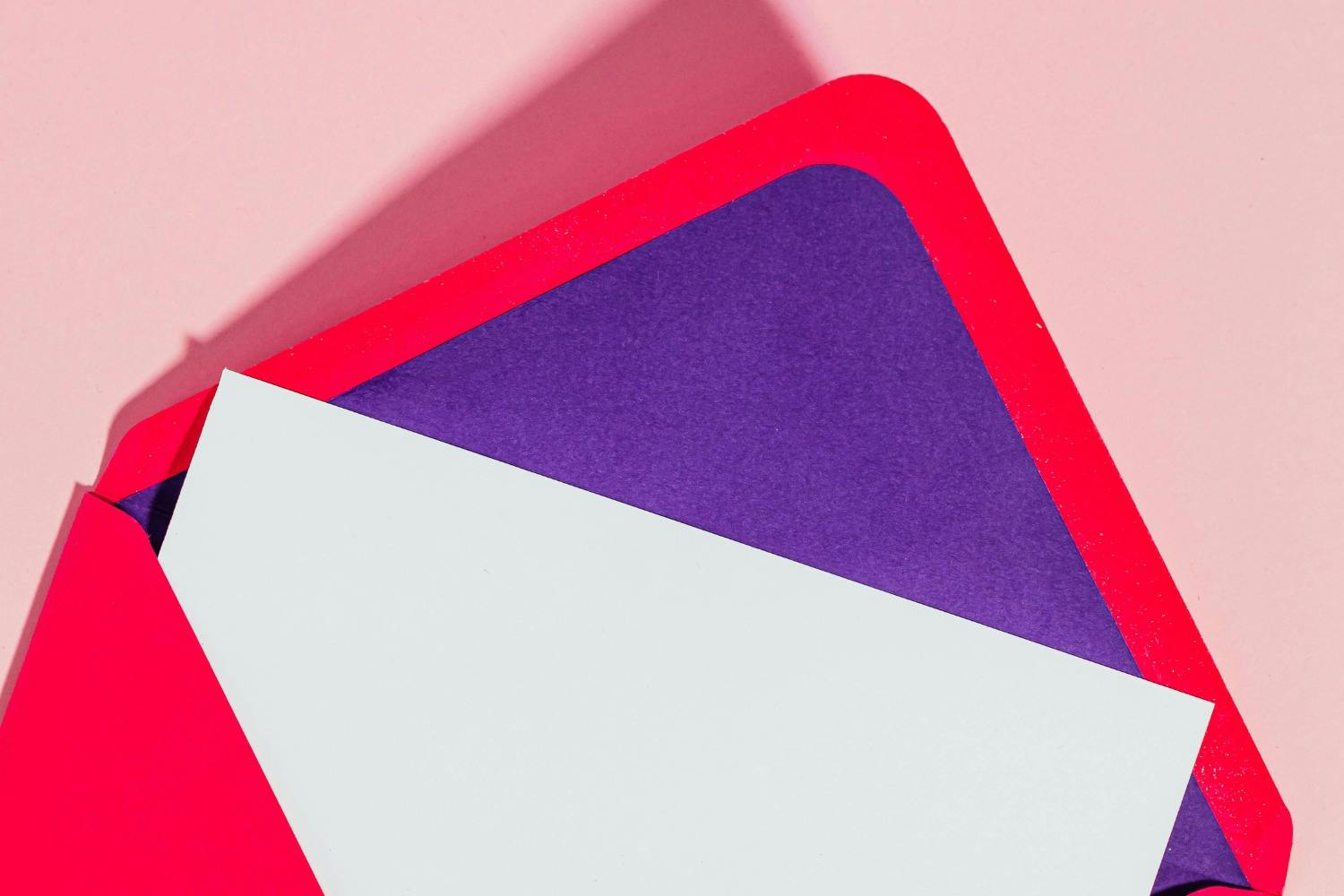
First Impressions Count: Crafting Corporate Invitations That Pop
The invitation is more than just a formality at corporate events; it's the first glimpse attendees have of what's to come. It sets the tone and builds anticipation, making it a critical element in the event's success. Your invitation is your first chance to impress and inform your guests, whether they are attending sleek, professional gatherings or vibrant, thematic parties. Ensure your corporate invitations are not only seen but remembered.
Understanding the Basics of Corporate Invitations
A corporate invitation does more than just announce an event. It communicates the company’s brand and the event's level of professionalism and importance. Each invitation must include basic information that every attendee needs: the purpose of the event, the date, time, and location, and any critical details about the theme or required attire. However, it's not just the information that counts, but also how it's presented. The design and tone should reflect both the corporate identity and the nature of the event itself, whether it's an annual gala or a casual get-together.
To start, every corporate invitation should answer the key questions of who, what, when, and where. It should also clearly state whether guests are allowed to bring plus ones or if specific parts of the event are optional. Such clarity not only helps to manage expectations but also aids in logistical planning, like catering and seating arrangements. The layout of these details should be intuitive and easy to follow, ensuring that recipients can understand the essentials at a glance.
Designing Business Event Invitations
The design of a business event invitation can significantly influence the recipient's perception of the event. It's crucial to match the style and formality of the invitation with the event it's announcing. For instance, a sleek, minimalist design with a muted color palette and elegant typography may be perfect for a high-level executive meeting, while a bright and bold color scheme with creative graphics might be better suited for a company retreat or team-building event.
When selecting colors, it’s wise to incorporate the company’s branding to reinforce brand recognition and cohesion. However, adding a personal or thematic twist can make the invitation stand out and stick in the minds of potential attendees. For example, if the event has a 1920s jazz theme, elements like Art Deco fonts and gold, black, and white colors could be woven into the design to evoke the right atmosphere.
Typography is another critical element; it should be readable yet elegant or dynamic, depending on the event’s tone. High-quality images or graphics can also add a visual appeal that complements the text, making the invitation feel more like a teaser of the event's vibe and less like a simple announcement. Remember, every design element chosen should aim to pull recipients in and make them excited about what's coming up.
Content Strategy for Corporate Event Invitation
Crafting the content of a corporate event invitation involves more than just listing details. The language used plays a pivotal role in setting the tone for the event and can significantly affect how the invitation is received. The content should be concise and to the point, yet warm and welcoming, ensuring that it speaks directly to the intended audience in a manner that reflects the company's ethos and the event's significance.
For a corporate gala, for instance, the invitation might employ a formal tone with refined language, subtly conveying the importance of the occasion and the exclusivity of the invite. Conversely, an invitation to a casual team outing might use lighter, more playful language to create a sense of fun and anticipation. Regardless of the tone, the call to action, such as RSVP instructions, should be clear and easy to find. This not only helps in managing attendee numbers but also demonstrates organizational prowess and attention to detail.
It's also crucial to consider the flow of information in the invitation. Start with the most compelling information, such as the event’s unique aspects or notable speakers and guests. Follow up with practical details, and conclude with any action items for the recipient, like registration links or contact information for inquiries. This structured approach ensures that every piece of information serves its purpose without overwhelming the reader.
The Technical Side of Business Event Invitations
Choosing between digital and physical invitations often depends on the nature of the event and the audience. Digital invitations are cost-effective, easy to distribute, and better for the environment. They also allow for real-time tracking of RSVPs and can be easily updated if event details change. Tools like email campaigns, event management software, or even custom-designed digital invitations can elevate the experience by integrating interactive elements such as animations or links.
However, for more formal or high-profile events, physical invitations might still be the best choice. They can provide a touch of luxury and tangibility that digital invitations cannot match. The quality of the paper, innovative printing techniques, and even the envelope can make a significant impression on recipients. High-quality materials and a well-considered design can make the invitation a keepsake, enhancing the special feel of the event.
Regardless of the format, accessibility should always be a priority. Ensure that digital invitations are mobile-friendly and that physical invitations are clear and legible. Additionally, consider the logistics of sending out invitations. For physical invites, factors like postal service timelines and international shipping need to be accounted for, while digital invites require attention to email deliverability and avoiding spam filters.
Personalizing Your Corporate Event Invitation
Personalization can dramatically increase the impact of an invitation. It makes recipients feel valued and can increase the likelihood of their attendance. Even simple personalization, such as including the recipient’s name in the greeting, can make a difference. For more sophisticated personalization, consider tailoring the content of the invitation to reflect the recipient’s previous interactions with the company. For example, if certain clients are known to appreciate particular aspects of your events, highlight these elements in their invitations.
Segmenting the guest list can also enhance personalization. Different versions of the invitation can be created for different types of guests—such as VIPs, regular clients, or first-time attendees. Each version can emphasize different benefits of attending the event, tailored to the interests and relationship history of each segment.
Incorporating feedback from past events is another way to personalize invitations. If attendees have expressed preferences for certain types of communication or themes, integrating this feedback into future invitations can show that the company listens and adapts, further strengthening the relationship between the business and its stakeholders.
Company Dinner Invitation: A Case in Detail
For something as intimate and significant as a company dinner, the invitation needs to strike the perfect balance between formality and personal appeal. This type of event usually serves to foster closer relationships among attendees, celebrate achievements, or encourage a relaxed discussion of future ventures. Therefore, the invitation should reflect the importance of the occasion while also setting a warm, welcoming tone.
Start by choosing a design that speaks to the exclusivity and elegance of a dinner event. Rich colors like deep blues, classic blacks, or elegant metallics can convey sophistication. Use script fonts or a simple, classy typeface to keep the design tasteful and readable. Including subtle, thematic graphics or borders can add a touch of personality without detracting from the formal nature of the invitation.
The wording of a company dinner invitation should be carefully crafted to convey all necessary details, including the purpose of the dinner, the exact location, time, and the expected dress code. Phrases like "You are cordially invited to join us for a dinner celebrating our annual achievements," followed by the specifics, help set the stage. Additionally, personal notes from the CEO or the event organizer can add a personal touch that makes the invitation feel more exclusive and valued.
Logistics and Follow-Up for Corporate Invitations
Effective management of the invitation process doesn't end with the sending of invites. Monitoring RSVPs and managing follow-ups are critical to ensuring the desired turnout. For digital invitations, use software that allows you to track who has opened the invite and who has responded. This functionality makes it easier to follow up with those who have not replied as the event nears.
For physical invitations, include an RSVP card that matches the invitation for a cohesive look. Provide pre-addressed and stamped envelopes to make the process as effortless as possible for the recipients. This attention to detail can encourage a timely response and reinforces the event's importance and the company's commitment to guest convenience.
Crafting an effective corporate invitation is both an art and a science. It requires a thoughtful blend of aesthetic appeal, precise content, and strategic logistics. Remember, the invitation is your first opportunity to make an impression, so make it count. Don't be afraid to get creative and personalize where possible to connect with your audience on a deeper level.
Ready to send out your next set of invitations? Consider these tips, tailor them to fit your event, and watch the RSVPs roll in.
